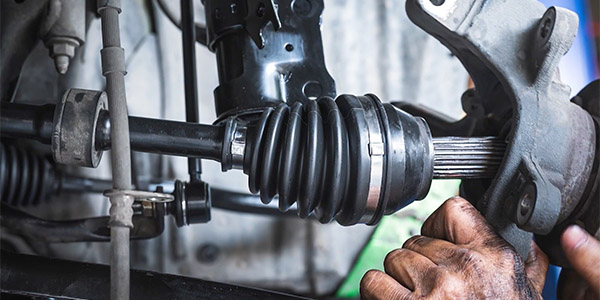If you leave it up to your customers, the oil in their vehicles may never be changed or may be replaced by something totally incompatible for their engine and driving requirements.
The fact is, when it comes to engine oil, it’s often believed that “they’re all the same.” How wrong this belief is!
Modern engines are built to tighter tolerances and, as a result, they rely on specific oil pressures for maximum fuel economy, or to support vital systems such as variable valve timing. Substituting a non-recommended-viscosity engine oil can negatively affect fuel economy and emissions, and may actually accelerate wear on critical components.
According to the American Petroleum Institute, there are five different groups of base oils used to make today’s motor oils, based on the refining methods and properties of the oil. What isn’t universally understood is that synthetic and conventional motor oils both start out the same way – as petroleum crude oil. Synthetics are simply a more refined oil. The formulations created by chemists can be tailored to meet specific demands of performance cars, high-mileage engines or those that operate in extreme environmental conditions – often in the same bottle of oil.
Exotic European cars fall under the same emission requirements and warranties as the more commonplace nameplates and domestic vehicles. Many manufacturers have switched from 20w50 oils to 5w40 and 0w40 oils to improve fuel efficiency and reduce startup emissions.
If you hear names like Ferrari, Bugatti or Lamborghini, you may believe a more exotic lubricant will be better for an oil change. In reality, as with domestic vehicles, it all comes down to the OEM specifications.
The first place to look is under the hood or rear hatch for the oil information. Manufacturers like Ferrari and Jaguar will place a sticker with the recommended oil weight and possibly an oil manufacturer near the engine. You should check the owner’s manual or service information for the manufacturer-recommended weight and requirements. The final stop is the oil manufacturer’s product datasheet.
Through advanced formulation, lubricants like Valvoline European Vehicle Full Synthetic provides extra detergents and dispersants that provide maximum sludge and deposit protection, along with premium additives that hold up to high temperatures and resist motor oil breakdown under severe driving conditions.
Just as SAE and ILSAC set certification standards in the United States, European manufacturers abide by the standards set by the European Automobile Manufacturer’s Association (ACEA). The packaging will indicate what requirements each oil meets or exceeds.
Although not every vehicle – European, Asian or Domestic – is an ideal candidate for full-synthetic oil, more and more consumers are recognizing the value of these oil formulations. In less than 10 years, the percentage of vehicles in operation using synthetics has jumped from 51 percent to 73 percent. Synthetic oils have become a mainstream consumer requirement – they’re not just for enthusiasts anymore.
The oil that’s correct for your customers’ cars shouldn’t be left to guesswork – always reference the OEM-specified oil for viscosity and performance requirements including wear resistance, friction reduction, viscosity stability over time the ability to disperse pollutants in the crankcase and keep the engine clean, and resistance to high-temperature breakdowns. Increasingly, these requirements will be met with a synthetic oil.
To learn more, visit teamvalvoline.com.
This video is sponsored by The Group Training Academy.














